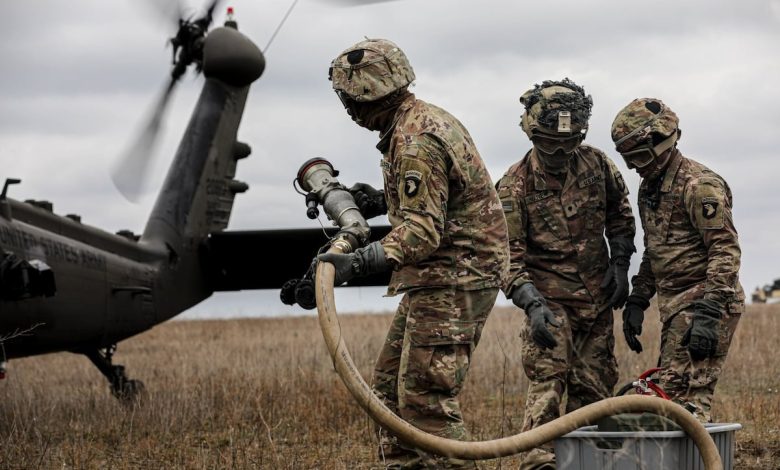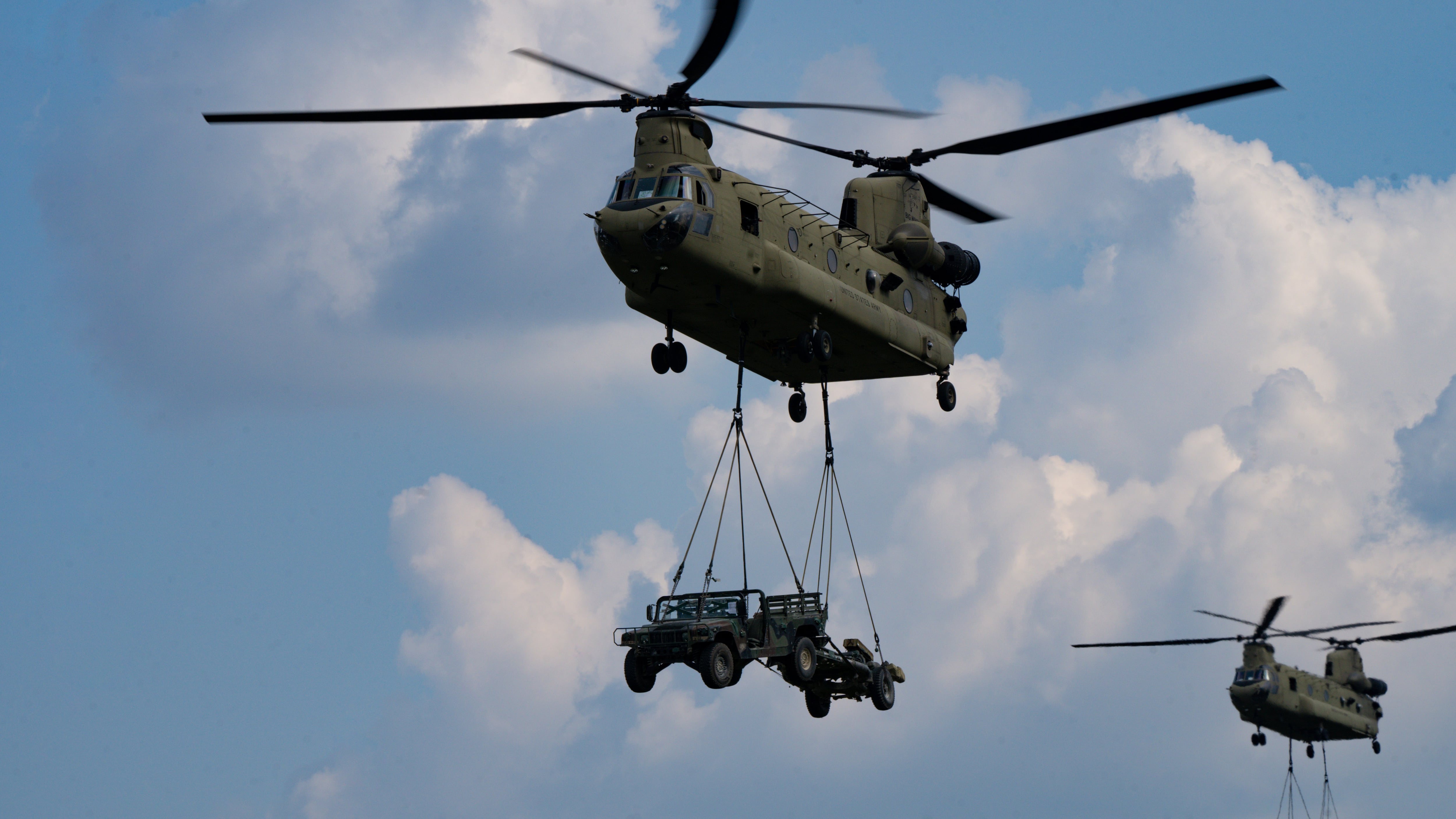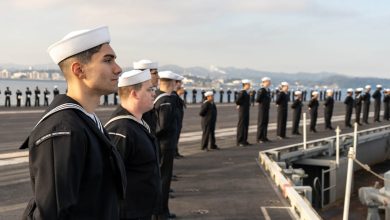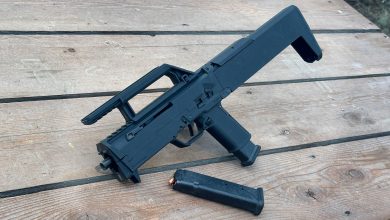Army looking to streamline and speed up helicopter refuel and resupply

The Army’s current method of rearming and refueling its helicopters worked well in past wars, but leaders fear it won’t keep pace with the faster-paced, move-or-be-killed wars of the future.
And if the service is called upon to fight across vast Asian or European territories, the service’s so-called Forward Arming and Refueling Points, or FARP, will be decisive for such operations.
FARPs involve staging ammunition and fuel at safe points along the pathway of aircraft, but such sites require manpower, are vulnerable to attack and need logistical support, especially in more remote locations, officials said.
But now, an effort known as Helicopter Expedited Refueling Operations, or the HERO project, aims to streamline the FARP process, getting support to units faster and using available aircraft more effectively, according to the Army.
RELATED
“We need solutions that enhance our agility, reduce our footprint, and ultimately keep our aviators in the fight,” Col. Ryan Kendall, 12th Combat Aviation Brigade commander said in a release announcing the initiative.
As part of this search for solutions, the 12th CAB has partnered with the Army Applications Laboratory to analyze current FARP operations and develop solutions.
Planners want to quicken the buildup, assembly, setup and breakdown of equipment, while decreasing aircraft refueling times.
They also hope to improve fueling equipment and reduce the time that aircraft have to loiter to get gassed up.
At a recent training event at the Joint Multinational Readiness Center in Hohenfels, Germany, the applications lab team worked with elements of the brigade during Exercise Saber Junction.
The next war’s FARP missions will also involve those teams having to work far forward and in dangerous locals, leaders said.
“Executing FARP operations in support of attack aviation mission requires significant manpower and experience to be conducted quickly and safely in a highly contested, near-peer threat environment,” Capt. Justin Thomas, distribution platoon leader, Echo Company, 1-3 Attack Battalion, said in a statement.
During the exercise, members of the HERO project team observed and analyzed Echo Company’s FARP planning, setup and operational procedures to better develop an application that can reduce the load on soldiers.
Some changes in the works go beyond software, such as pumping fuel faster or using robots to do soldier jobs.
The HERO team is working with Beacon Industries, a Connecticut-based manufacturing company, and robotics company IA4S on those specific tasks.

Beacon Industries provided a newly developed fuel pump that pumps fuel three times faster than the current 300 gallons per minute. The new pump also uses a sensor to inspect and test fuel in real time, according to the release.
If current HERO team experiments are successful, soldiers may be able to use a robot, built on a Bobcat skid-steer loader, a forklift-like construction vehicle, to remotely refuel the aircraft.
Such an asset would support news of 1st Armored Division training earlier this year that required “deep strike” helicopter missions.
Then-division commander Maj. Gen. James Isenhower III touted the FARPs use in a 350-mile round trip strike mission involving more than two dozen helicopters and support aircraft the unit conducted in January.
The strike saw a battalion’s worth of AH-64 Apache helicopters fly close to the terrain at night in a 7-hour mission, using the FARPs to refuel.
“FARP is the decisive point for any operation,” Isenhower said at the recent Maneuver Warfighter Conference at Fort Moore, Georgia, when he shared details from the division’s training.
Todd South has written about crime, courts, government and the military for multiple publications since 2004 and was named a 2014 Pulitzer finalist for a co-written project on witness intimidation. Todd is a Marine veteran of the Iraq War.
Read the full article here







